Filter by
Note: As this project is architecturally topped out, the data is based on the most reliable information currently available. This data is thus subject to change until the building has completed and all information can be confirmed and ratified by the CTBUH.
You must be a CTBUH Member to view this resource.
Merdeka PNB118
Heritage of Independence, KL118 Tower, Menara Warisan Merdeka, PNB Headquarters
Building
Architecturally Topped Out
serviced apartments / hotel / office
composite
GBI Certified; LEED Certified
644.0 m / 2,113 ft
118
5
30
202
87
10 m/s
292,000 m² / 3,143,062 ft²
Usually involved in the front end design, with a "typical" condition being that of a leadership role through either Schematic Design or Design Development, and then a monitoring role through the CD and CA phases.
The Design Engineer is usually involved in the front end design, typically taking the leadership role in the Schematic Design and Design Development, and then a monitoring role through the CD and CA phases.
The Engineer of Record takes the balance of the engineering effort not executed by the “Design Engineer,” typically responsible for construction documents, conforming to local codes, etc.
The CTBUH lists a project manager when a specific firm has been commissioned to oversee this aspect of a tall building’s design/construction. When the project management efforts are handled by the developer, main contract, or architect, this field will be omitted.
The main contractor is the supervisory contractor of all construction work on a project, management of sub-contractors and vendors, etc. May be referred to as "Construction Manager," however, for consistency CTBUH uses the term "Main Contractor" exclusively.
Other Consultant refers to other organizations which provided significant consultation services for a building project (e.g. wind consultants, environmental consultants, fire and life safety consultants, etc).
These are firms that consult on the design of a building's façade. May often be referred to as "Cladding," "Envelope," "Exterior Wall," or "Curtain Wall" Consultant, however, for consistency CTBUH uses the term "Façade Consultant" exclusively.
Material Supplier refers to organizations which supplied significant systems/materials for a building project (e.g. elevator suppliers, facade suppliers, etc).
You must be a CTBUH Member to view this resource.
Usually involved in the front end design, with a "typical" condition being that of a leadership role through either Schematic Design or Design Development, and then a monitoring role through the CD and CA phases.
The Design Engineer is usually involved in the front end design, typically taking the leadership role in the Schematic Design and Design Development, and then a monitoring role through the CD and CA phases.
The Engineer of Record takes the balance of the engineering effort not executed by the “Design Engineer,” typically responsible for construction documents, conforming to local codes, etc.
The Design Engineer is usually involved in the front end design, typically taking the leadership role in the Schematic Design and Design Development, and then a monitoring role through the CD and CA phases.
The CTBUH lists a project manager when a specific firm has been commissioned to oversee this aspect of a tall building’s design/construction. When the project management efforts are handled by the developer, main contract, or architect, this field will be omitted.
The main contractor is the supervisory contractor of all construction work on a project, management of sub-contractors and vendors, etc. May be referred to as "Construction Manager," however, for consistency CTBUH uses the term "Main Contractor" exclusively.
Other Consultant refers to other organizations which provided significant consultation services for a building project (e.g. wind consultants, environmental consultants, fire and life safety consultants, etc).
These are firms that consult on the design of a building's façade. May often be referred to as "Cladding," "Envelope," "Exterior Wall," or "Curtain Wall" Consultant, however, for consistency CTBUH uses the term "Façade Consultant" exclusively.
Material Supplier refers to organizations which supplied significant systems/materials for a building project (e.g. elevator suppliers, facade suppliers, etc).
Vertical Transportation: Ascent & Acceleration
12 September 2017 - CTBUH Research
Skyscraper Summit Warms Sydney Up for CTBUH 2017
18 August 2017 - Event
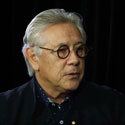
22 May 2018 | Kuala Lumpur
Five Minutes With: Karl Fender
Karl Fender, founding partner at Fender Katsalidis, sat down with CTBUH to discuss a number of his firm's projects, including the PNB 118 Tower in...

28 December 2019
Tall Buildings of the Future as Seen From the Present
SawTeen See, Robert Bird Group Pty Ltd
Aerodynamic damping through the use of vertical long slots reduces the dynamic component of the wind loads on the building. Seminal examples include the three-legged...

22 May 2018 | Kuala Lumpur
Five Minutes With: Karl Fender
Karl Fender, founding partner at Fender Katsalidis, sat down with CTBUH to discuss a number of his firm's projects, including the PNB 118 Tower in...

31 October 2017 | Kuala Lumpur
Karl Fender of Fender Katsalidis Architects is interviewed by Chris Bentley during the 2017 CTBUH Australia Conference.

18 October 2016 | Kuala Lumpur
CTBUH Video Interview – Hashimah Hashim
Hashimah Hashim of KLCC Property Holdings Berhad is interviewed by Chris Bentley during the 2016 CTBUH China Conference. Hashimah discusses the master planning and development...
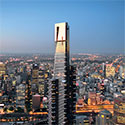
17 October 2016 | Kuala Lumpur
Merdeka PNB118 Case Study: Adding Value to the Growing City
Monday October 17, 2016. Shenzhen, China. Karl Fender, Fender Katsalidis Architects, presents at the 2016 China Conference Session 4b: Other Asia Case Studies. Tall buildings...
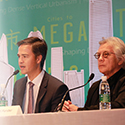
17 October 2016 | Kuala Lumpur
Monday, October 18, 2016. Shenzhen, China. Kipsan Beck of MahaNakhon, PACE and Karl Fender, of Fender Katsalidis Architects, answer questions at the end of 2016...

16 October 2016 | Kuala Lumpur
CTBUH Video Interview – Abrar Sheriff
Abrar Sheriff of Turner International is interviewed by Chris Bentley during the 2016 CTBUH China Conference. Abrar discusses the planning and construction process for supertall...

16 October 2016 | Kuala Lumpur
CTBUH Video Interview – Karl Fender
Karl Fender of Fender Katsalidis Architects is interviewed by Chris Bentley during the 2016 CTBUH China Conference. Karl discusses the design concept for Merdeka PNB118...

28 December 2019
Tall Buildings of the Future as Seen From the Present
Aerodynamic damping through the use of vertical long slots reduces the dynamic component of the wind loads on the building. Seminal examples include the three-legged...
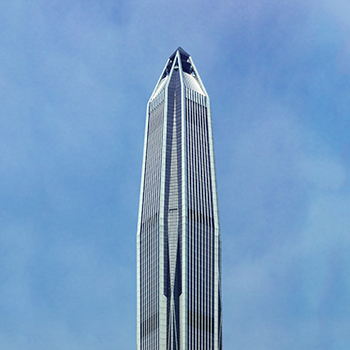
17 October 2016
Cities to Megacities: Perspectives
The CTBUH 2016 International Conference is being held in the three cities of the Pearl River Delta, the world’s largest “megacity,” projected to have 120...

17 October 2016
KL118 Case Study: Analysis of Different Bore Pile Testing Methods
In the construction of tall towers a variety of pile testing methodologies are used. Piles can be tested for many purposes including the optimization of...

17 October 2016
Merdeka PNB118 Case Study: Adding Value to the Growing City
Tall buildings embody objectives ranging from pure business to nation building. The KL118 Tower in particular represents these objectives and more as it successfully knits...
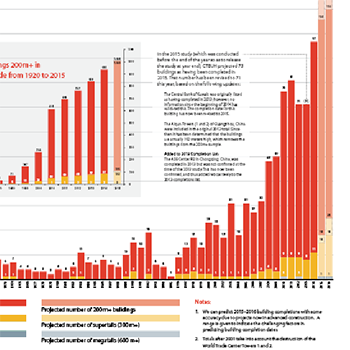
31 December 2014
Year in Review: Tall Trends of 2014
An All-Time Record 97 Buildings of 200 Meters or Higher Completed in 2014 and 2014 showed further shifts towards Asia, and also surprising developments in...
12 September 2017
CTBUH partnered with Guinness World Records to identify the commercial building with the fastest elevator speeds and longest vertical runs.
18 August 2017
A joint venture between the Urban Taskforce and CTBUH delivered a successful “warm-up” event in advance of the CTBUH 2017 Conference in Australia on August 18, 2017.
Subscribe below to receive periodic updates from CTBUH on the latest Tall Building and Urban news and CTBUH initiatives, including our monthly newsletter. Fields with a red asterisk (*) next to them are required.
View our privacy policy